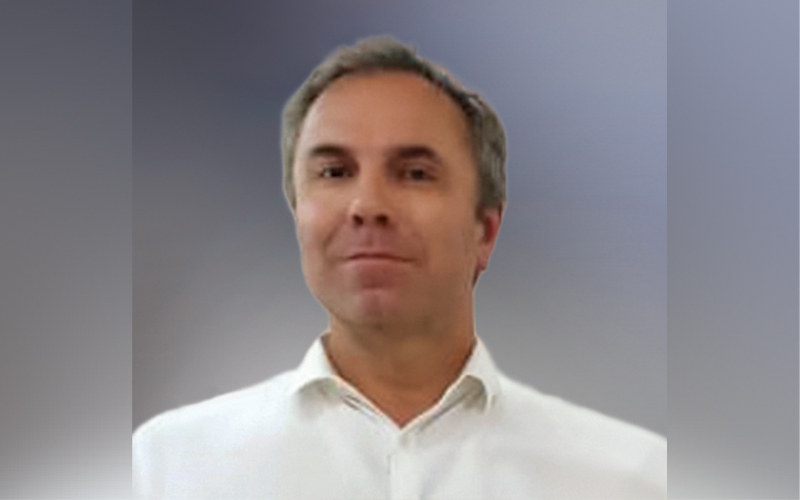The COVID-19 crisis will encourage many industries to use more Artificial Intelligence to increase safety and improve productivity.
In an interview given to Wire & Cable India, Mr. Benoit Lecuyer talks about the contingency plans the industry is making to handle the coronavirus crisis.
Excerpts.
Wire & Cable India: According to a report by Grand View Research, Inc., the global wire and cable market is expected to reach USD 232.6 billion by 2025. Do you think the ongoing COVID-19 pandemic will discourage the growth of the wire and cable industry?
Benoit Lecuyer: This pandemic is the most difficult one since the Second World War. We have witnessed a large pause on projects, construction, and manufacturing. ‘Work from Home’ has, however, allowed managers to train themselves and perform online courses and e-learning with a few clients. The COVID crisis has forced cable manufacturers to adapt their workforce protection, the manufacturing and supply chain methods, to safeguard their cash.
Cables production for essential industries and services such as power, defense, telecom, and hospitals is resuming in a gradual manner; however, we foresee several weeks before we can return to the normal situation.
WCI: Going forward, what forces will shape the market?
BL: Many governments, including the Indian government, poured a large amount of money to support the economy and avoid bankruptcy. India has a big advantage with its young population, its optimism and its resilience during the difficulties to rebound fast.
WCI: What factors have been driving the overall wire and cable market in India? Do you think these factors will remain relevant in the next three to five years?
BL: India is on a virtuous growth for many years – thanks to infrastructures investments, rolling stock, railways, renewable energies, fiber optic deployment, smart cities, marine, etc. These fundamentals are still present but on a slower pace now. Clearly, the year 2020 will be a flat or negative year for many industries. Banks will play a fundamental role in the near future to ease money flow and allow SME’s to restart.
WCI: What are the recent customers’ trends or preferences on the domestic wire and cable market?
BL: We have witnessed the customers’ will and questions for innovation, smart cables solutions, more environmentally friendly materials, and costs management. Increased productivity on cable installation, reduction of transportation costs, and smart grids are the key areas.
WCI: What kind of growth will different segments of wires and cables in India witness in the near future?
BL: This COVID-19 crisis will certainly encourage several industries to use more robotics means, Artificial Intelligence, to increase safety and improve productivity. Hospitals, hotels, factories, warehouses, and banks will use it to have safe deliveries and safe working, allowing people distance. For these needs, robots, cobots, and drones requiring light and smart cables will be needed.
‘Work from Home’ entailing the large use of Skype, Slack, Zoom, and Citrix applications will boost fiber and telecom cable networks. In this field, Prysmian has innovated in bend insensitive fiber technology enabling a larger packing of fibers into tubes. Equally, on Cat 6 10 Giga, Prysmian reached up to 35 percent reduction in cable size, allowing 20 percent lighter product easing installation. Productivity is increased with up to 50 percent more cable in a conduit. Fixed assets management will be addressed with cables inventory management.
WCI: In what areas can Indian wire and cable manufacturers become more efficient?
BL: Tremendous improvements, localization of technologies with the ”Make in India” program, happened during the past years in the Indian cable industry. Some identified next steps are the use of more environment solutions such as welded aluminum sheath instead of lead on EHV cables, the use of lighter material i.e. synthetic armour in submarine cables. ROHS is being applied widely.
The use of chips and fiber optic in some cables can also help maintenance anticipation in some applications. We have worked in these fields as well as on new generation of raw materials. LSOH new compounds lower energy consumption. The use of natural and bio-derived polymers sharply reduces the hazardous content. Also, some innovative manufacturing processes allow conductor diameter reduction and outer sheath reduction.
WCI: Do you think smart grid implementation and the rise of EVs in India will drive the growth of the wire and cable industry? What would be the challenges in this growth journey?
BL: Electric vehicles have a bright future in India. EVs will reduce India’s oil import, pollution and noise. The FAME2 plan has mapped out a great roadmap. Tata, Hyundai, Maruti, and Renault have announced the launch of several models, including in partnership with some taxi operators. The States’ decision to have a charging station every 30 kms on highways, in several malls and hotels, will boost the power cable industry. It will also be beneficial for DC cables and liquid cooled cables required for high-power charging up to 400 Kw. The emergence of standards in the e-mobility industry will also secure the quality of cable connections in charging stations.





